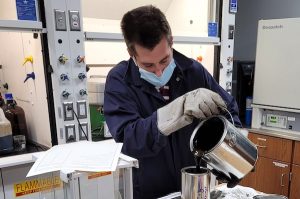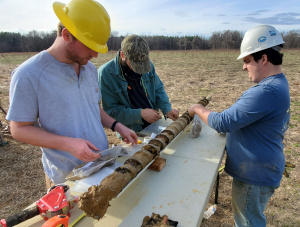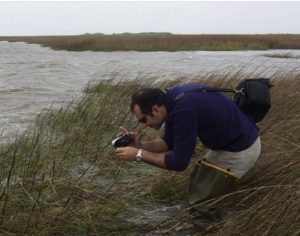The University of Mississippi is proud to be an R1 research institution – or one of ‘very high research activity’
We are one of only 146 institutions in the U.S. with this top designation by the Carnegie Classification of Institutions of Higher Education.
The School of Engineering is playing its part. We have four dedicated research centers that touch on the medical, environmental and infrastructure challenges the world faces today.
Center for Diagnostics, Design, Devices and Biomechanics (CD3B)
CD3B connects science, medicine and engineering to advance the development of modern medical technology and devices, as well as new surgical approaches and practices. Engineering faculty will work with other Ole Miss professors and industry experts to create an innovative learning model to benefit the people of Mississippi and beyond.
 Center for Graphene Research and Innovation (CGRI)
Center for Graphene Research and Innovation (CGRI)
CGRI bridges the gap between university-based science and discovery and industry-led innovations and applications for graphene, a form of carbon made of a single layer of atoms. Graphene is incredibly strong and flexible, and its conductivity lends it to a broad range of applications ranging from roads and bridges to electronics to medicine.
CGRI faculty and news
Mississippi Mineral Resources Institute (MMRI)
 MMRI provides both the public and private sectors with expertise needed to make responsible decisions regarding Mississippi’s and the nation’s mineral resources and environmental well-being. One project, for example, explores the recovery of Gulf ecosystems after the unprecedented flooding of the Mississippi River in recent years.
MMRI provides both the public and private sectors with expertise needed to make responsible decisions regarding Mississippi’s and the nation’s mineral resources and environmental well-being. One project, for example, explores the recovery of Gulf ecosystems after the unprecedented flooding of the Mississippi River in recent years.
MMRI website
National Center for Computational Hydroscience and Engineering (NCCHE)
 NCCHE fosters the growth of research in computational hydroscience and engineering to conserve soil and water, model impacts of failure of dams and/or levees and develop tools to assist researchers and scientists in the field. For example, it has developed software that quickly calculates the spread of flood water in case of dam or levee breaches.
NCCHE fosters the growth of research in computational hydroscience and engineering to conserve soil and water, model impacts of failure of dams and/or levees and develop tools to assist researchers and scientists in the field. For example, it has developed software that quickly calculates the spread of flood water in case of dam or levee breaches.
NCCHE website
The Center for Marine Resources and Environmental Technology (CMRET)
The CMRET is the offshore branch of MMRI. It was was established by Congress in 1988 as part of the Mineral Institutes Program as The Marine Mineral Technology Center, and it was reauthorized under the Marine Minerals Resources Research Act of 1996 as CMRET. It is administrated by the BOEM (former MMS). The primary objective of the CMRET is to investigate and to assess mineral resources within the US Economic Exclusive Zone (EEZ) including rigorous study of the seafloor ecological conditions. CMRET fosters the development of selected mineral material from US seabed by providing opportunities for appropriate engineering system research, development, and technology transfer within academic, government and industrial community. The Center also provides leadership and facilities for education and training of the nation’s scientists and engineers in the field of ocean mineral development.
established by Congress in 1988 as part of the Mineral Institutes Program as The Marine Mineral Technology Center, and it was reauthorized under the Marine Minerals Resources Research Act of 1996 as CMRET. It is administrated by the BOEM (former MMS). The primary objective of the CMRET is to investigate and to assess mineral resources within the US Economic Exclusive Zone (EEZ) including rigorous study of the seafloor ecological conditions. CMRET fosters the development of selected mineral material from US seabed by providing opportunities for appropriate engineering system research, development, and technology transfer within academic, government and industrial community. The Center also provides leadership and facilities for education and training of the nation’s scientists and engineers in the field of ocean mineral development.
Department research
The School of Engineering faculty, graduate students and undergraduates undertake a wide variety of research and pursuits.
- Biomedical engineering
- Chemical engineering
- Civil engineering
- Computer and information science
- Electrical and computer engineering
- Geology and Geological engineering
- Mechanical engineering